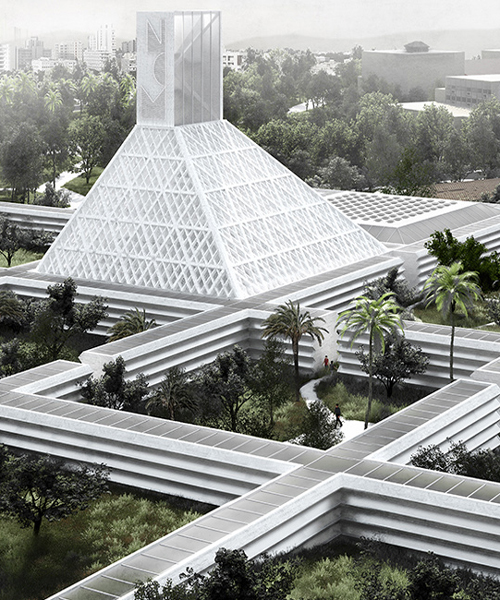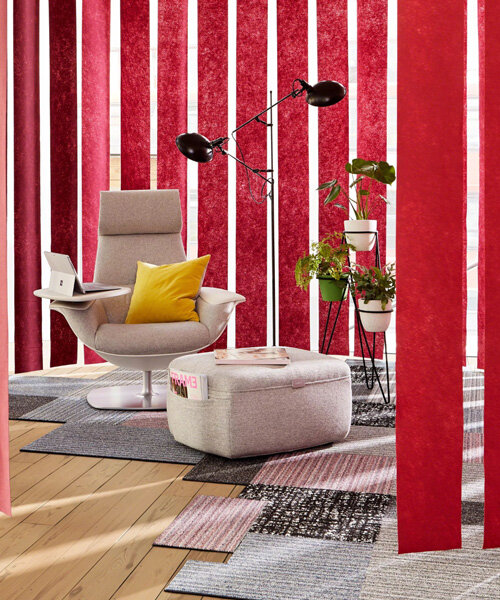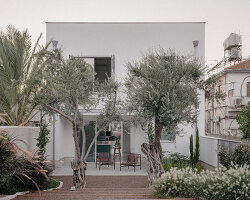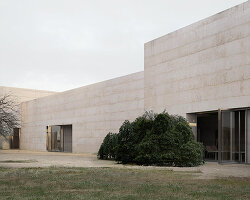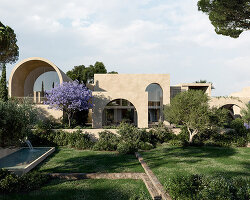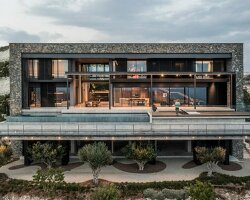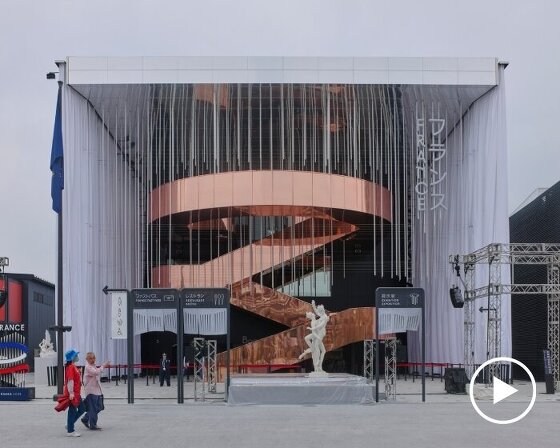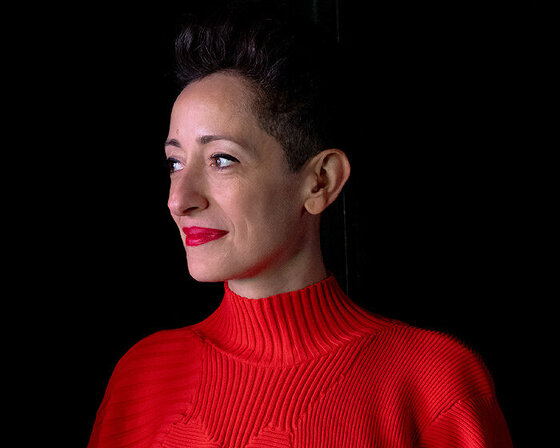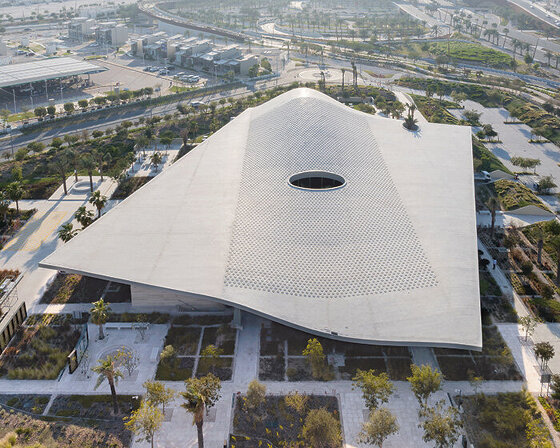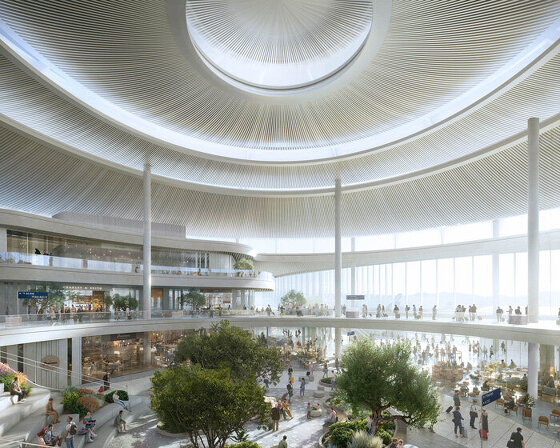papalampropoulos’ new cyprus museum in nicosia defies the mono-functional building approach and emerges as an ‘urban artifact’. the evolution of the museum is manifested in a process through which the traditional character is slightly changed into a multi-use complex that attempts to reshape the public space.
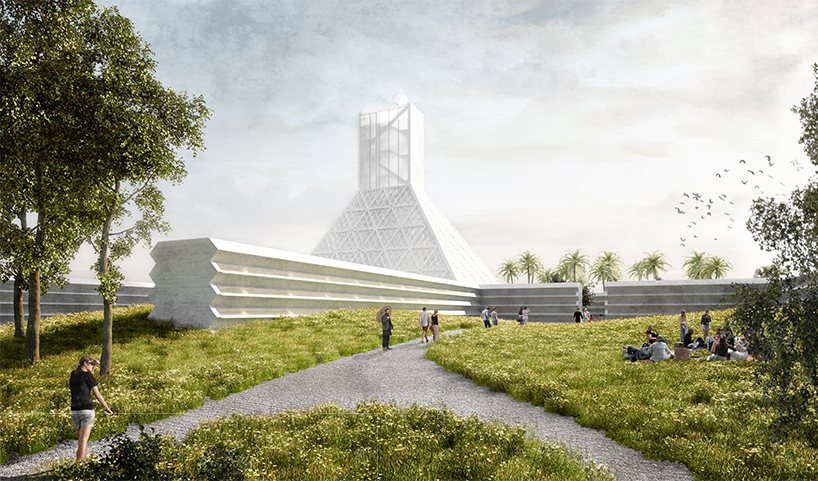
north entrance to the museum garden
the design is based upon the necessity of an enclosed program, the museum, and the openness of a green recreational area, the garden, that connects the public space from pedieos river to the old city center. in order to blend these two contradictory types of space, papalampropoulos architecture bureau appropriates the paradigm of ‘walled gardens’ to articulate a coherent urban structure. nicosia’s green area is extended inside the museum site by inserting a grid system in the form of intersecting walls, that shapes enclosures, gardens, and harvests light for the exhibition spaces underneath.
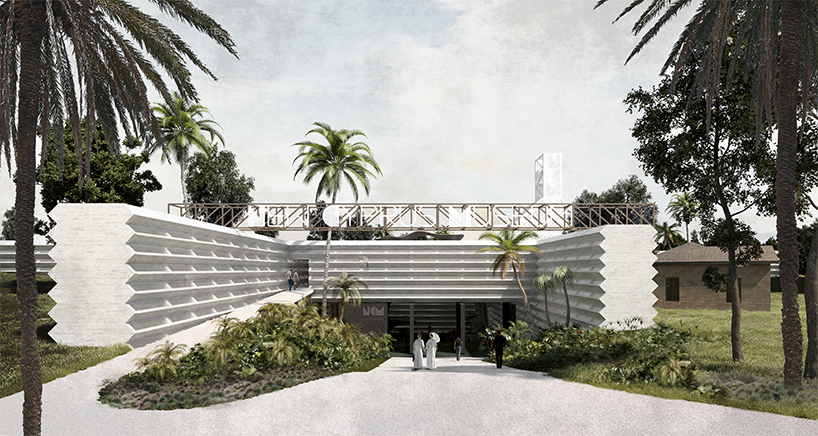
museum entrance
the grid is the symbol of the new urban pattern. a janus arrangement, half museum – half garden, forms the project creating two distinct but equally important sectors shaped by the grid:
a. a lower space for the museum exhibition.
b. an upper performative space for the enclosed gardens — outdoor rooms that can serve as experimental temporary art and archeological exhibition areas.
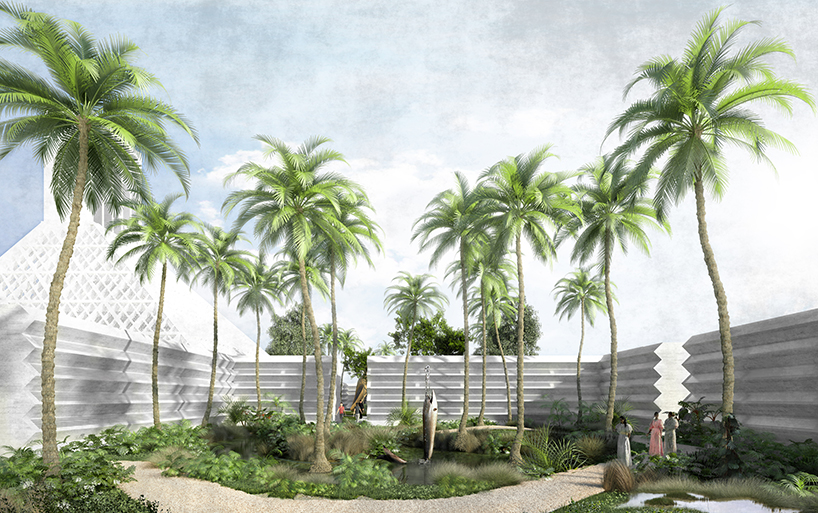
palms’ garden
the upper part of the complex is dedicated to an experimental public space that forms the core of the proposal. the walls serve as light wells that illuminate the underground exhibition spaces and at the same time are areas that can host public events, contemporary performances, or leisure activities. additionally, the outdoor areas are supplemented with permanent functions such as the cafe, the conference hall, the library, the department of antiquities, and the administration.
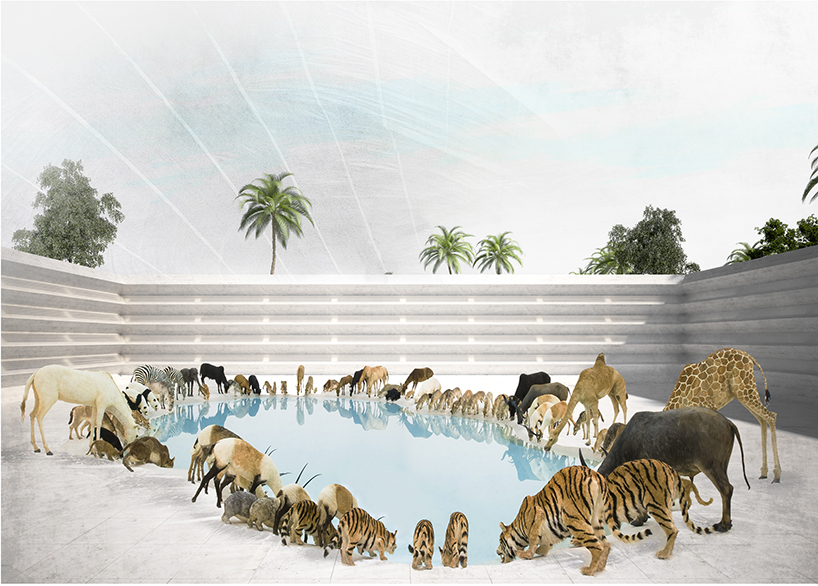
experimental outdoor room
the lower part becomes an underground yet naturally illuminated exhibition space, as light becomes the connecting element between the two sectors. the enclosures form distinct thematic rooms, varying with natural light accessibility. for instance, spaces with low natural light are exploited for low light requirement demonstrations, such as, special displays, multimedia, and interactive presentations. these rooms are an inverted space oriented towards the past, resembling the process of memory.
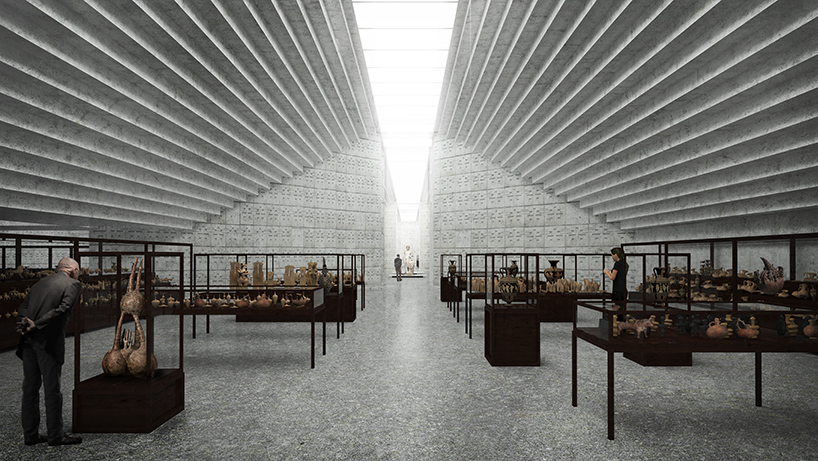
permanent exhibition space
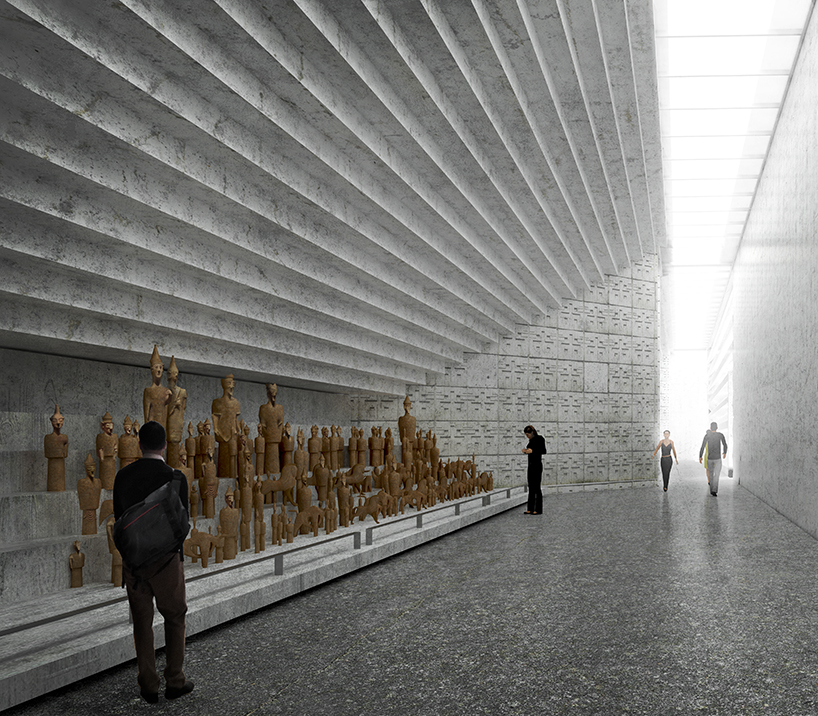
swedish mission exhibition room
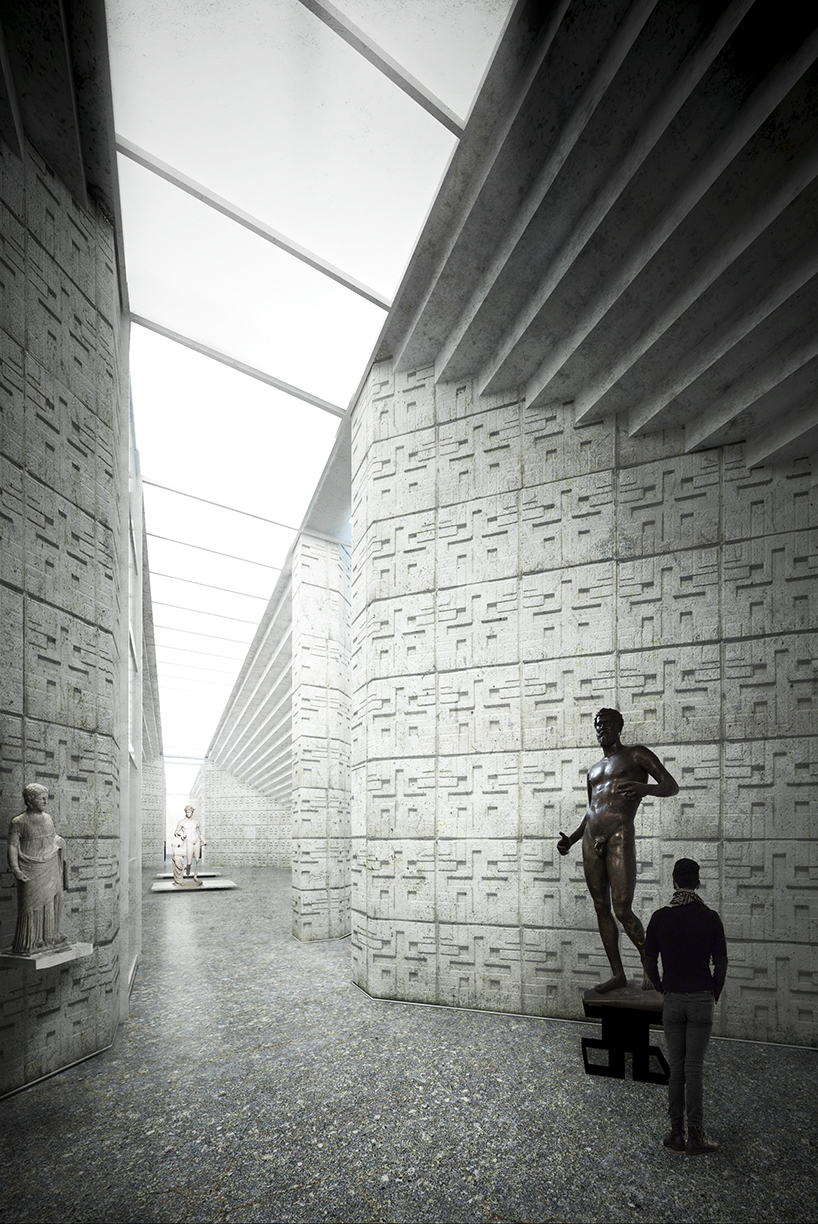
exhibition threshold
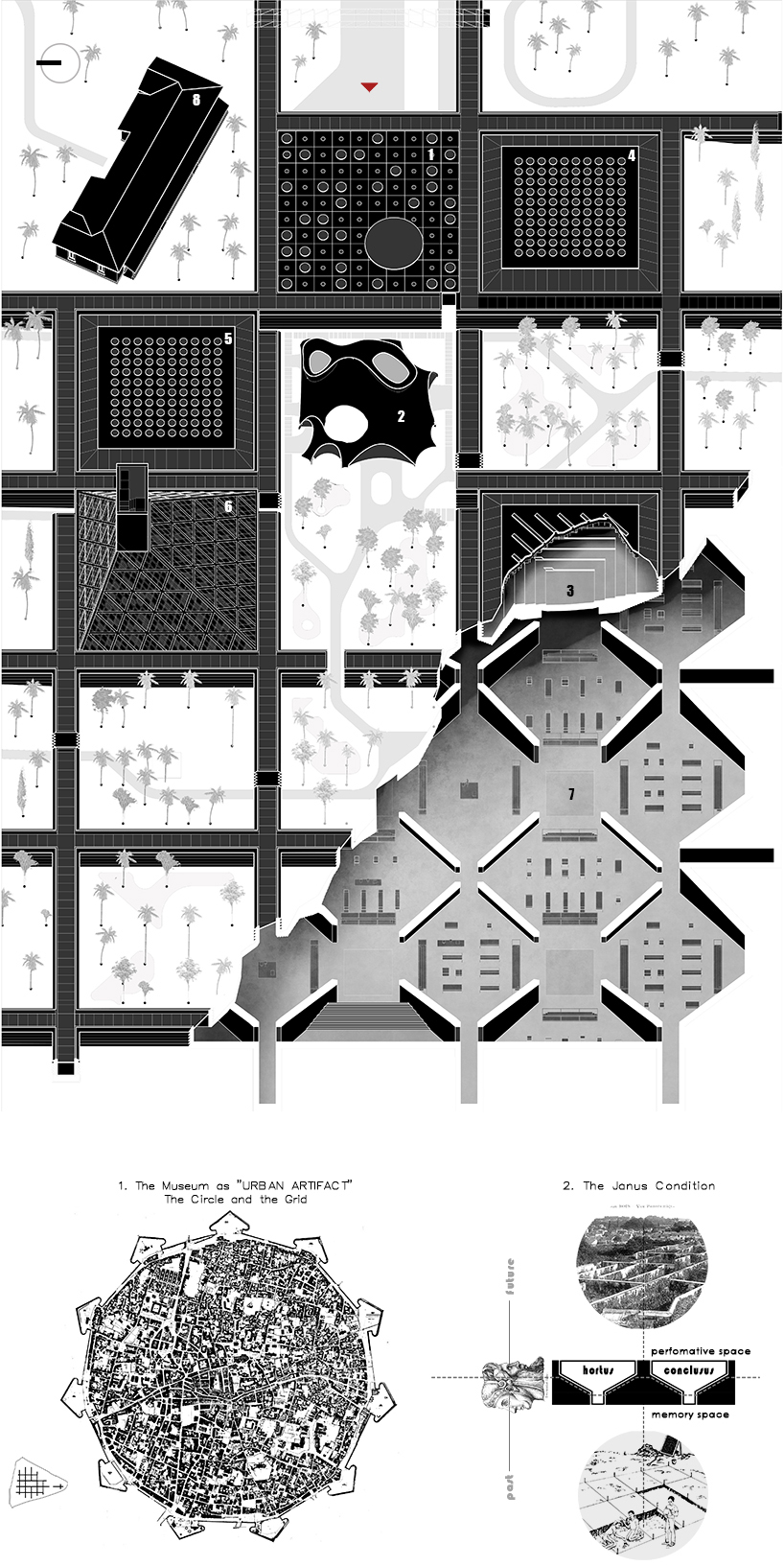
the janus condition – conceptual diagram
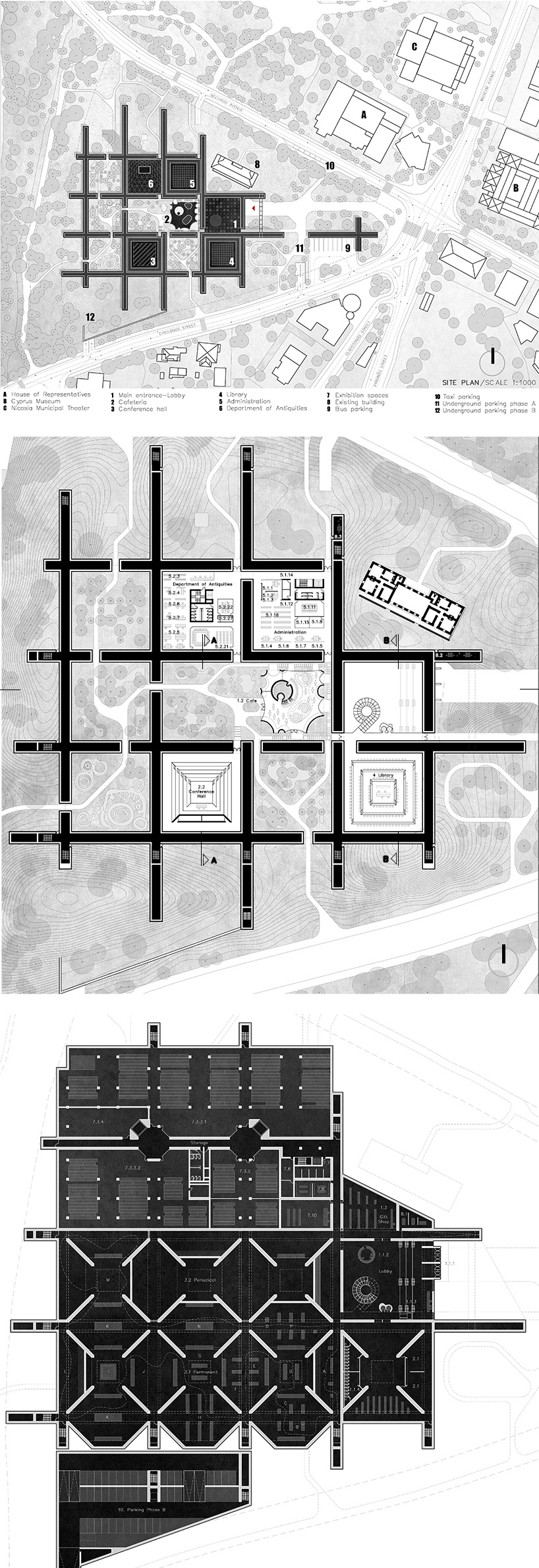
plans
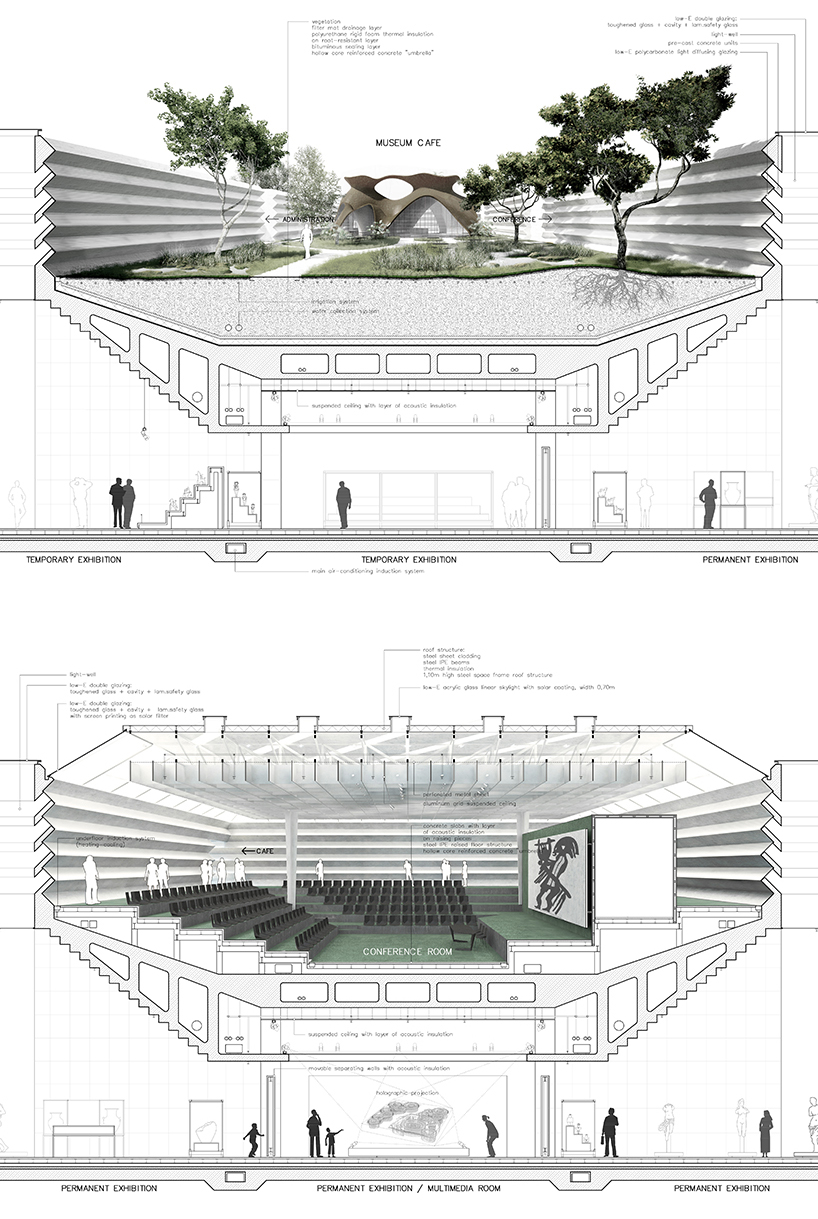
room episodes
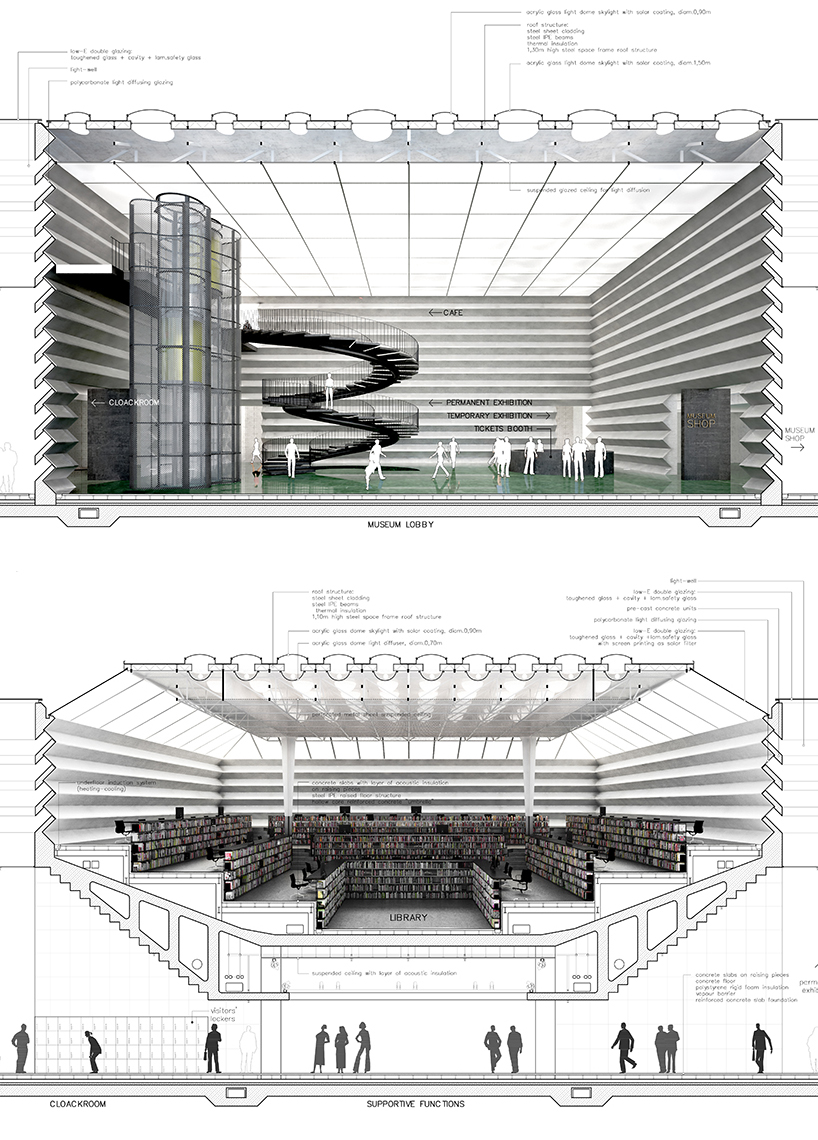
room episodes
designboom has received this project from our ‘DIY submissions‘ feature, where we welcome our readers to submit their own work for publication. see more project submissions from our readers here.
edited by: apostolos costarangos | designboom
